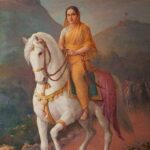THE TERRACOTTA TEMPLES OF BISHNUPUR
The term ‘terracotta’ is rooted in the Latin expression “terra cotta,” translating to ‘baked earth. ‘ Terracotta can be straightforwardly defined as earthenware based on clay. The history of terracotta stretches back thousands of years. From the Indus Valley Civilization to ancient Mesopotamia, and from Greek culture to Chinese dynasties, terracotta has been utilized widely by various peoples throughout history.
Bishnupur literally means city of lord Vishnu. This may be derived from the fact that the kings of Bishnupur were followers of Vaisnavism. Bishnupur, a quaint town in West Bengal, is a true repository of terracotta clay artistry. Here, one can experience a mesmerizing blend of history and creativity. The town is famous for its remarkable terracotta temples and sculptures that date back centuries. Temples and sculptures from this period reveal elaborate terracotta designs, highlighting a distinctive amalgamation of Hindu and Buddhist elements.These intricate works tell stories of mythological figures and ancient legends, providing insight into the region’s abundant cultural legacy. The terracotta art of Bishnupur continues to enchant visitors, standing as a testament to the lasting impact of this exceptional craft.
The town boasts a distinguished history, flourishing during the 17th and early 18th centuries. Under the governance of the Malla dynasty’s Hindu Rajas, Bishnupur cultivated a distinct architectural style and is celebrated for perhaps the finest and most intricate terracotta craftsmanship in Eastern India, which has endured the test of time. The terracotta tiles found in its temples and sacred sites illustrate narratives from the Ramayana, Mahabharata, and other mythological tales. In addition to its temple design, Bishnupur is famed for the skill involved in its terracotta figures, ceramics, jewelry, and various ornamental items. Recently, artisans from Panchmura, a nearby town in Bankura, have been producing thousands of terracotta panels that replicate the bas-reliefs found on the terracotta temples of Bishnupur.

Fig.1: Madan Mohan temple (Image by Tathagata Sikdar- https://www.flickr.com/photos/tathagata_sikdar/6815791008)
This temple honors Krishna and was built by Durjan Singh Dev in 1694. It is celebrated for its exquisite terracotta sculptures, illustrating events from Krishna’s life and various mythological tales.

Fig.3: Radha Shyaam temple. (Image by Amitabha Gupta- https://amitabhagupta.files.wordpress.com/2012/08/picture101.jpg)
The Radha Shyam Temple is dedicated to Radha and Krishna and was constructed by the Malla monarch Chaitanya Singh. The terracotta panels on the structure portray moments from the Radha-Krishna legend.
The temple construction was actively done until the mid-19th century, during which time a variety of temples featuring exceptional terracotta craftsmanship were constructed. However, from the early 19th century onward, Western influences began to significantly impact styles, themes, and characteristics. Various socio-economic factors contributed to a swift decline in both the quality and quantity of temple construction and terracotta artistry.
Reports from the 18th century indicate that Bishnupur was home to as many as 450 terracotta and laterite stone temples. Currently, only about 20 of these structures have survived. These temples are included on UNESCO’s Tentative List. They undoubtedly draw visitors globally who seek to appreciate the distinct architectural and artistic heritage of the area. The detailed terracotta carvings on these structures portray a rich array of religious and cultural narratives, establishing their significance in India’s architectural and historical heritage.
About the Author:
Author: Ishani Gupta
Ishani Gupta, is an editor and an independent researcher. She holds a degree in Manuscriptology & Palaeography from IGNCA & holds professional training in Archaeology & Art Appreciation from Indian Museum, Kolkata. The allure of heritage deeply resonates with her, and she aspires to be a curator of such treasures. She believes that every story from the past is worth discovering.
LinkedIn – https://www.linkedin.com/in/ishani33



